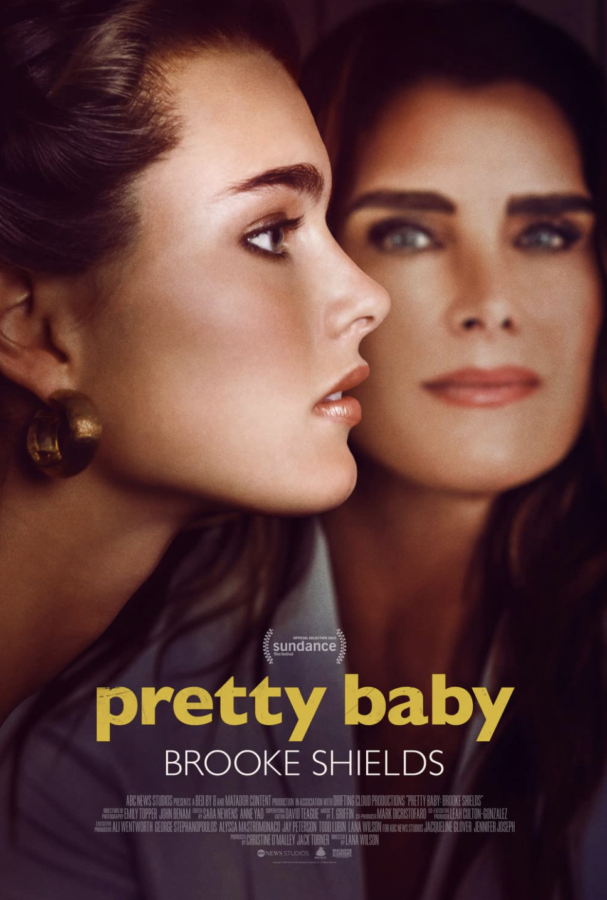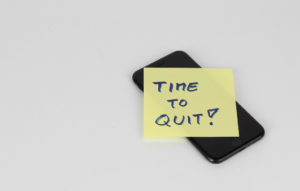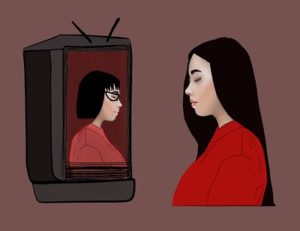Pretty Baby: Brooke Shields uncovers the truth of the over-sexualization of children in the film industry
May 16, 2023
Life in front of the camera began at a very young age for Brooke Shields. In fact, it began even before she took her first steps. As the face of Ivory Soap at just 11 months old, Brooke Shields was practically born into the limelight and quickly became a household name that stole the hearts of millions of Americans.
In the two-part documentary “Pretty Baby: Brooke Shields,” directed by Lana Wilson, Shields recounts her life story. It unapologetically explores the turbulent life and career of the ‘80s icon through an abundance of archive material, interviews with culture reporters and cinema historians, Shields’ close friends and even Shields herself.
Yet this attention came at a price. Being a child actress with striking looks made her the object of desire for many, and Shields was thrust into the dark underbelly of Hollywood. Her glamour, as it turned out, came with incessant sexualization and a loss of agency.
At just 12 years of age, she secured her first major film role as a child prostitute in Louis Malle’s infamous 1978 film “Pretty Baby.” At 15 years, she starred in the coming-of-age film “Blue Lagoon” opposite Christopher Atkins, who played both her cousin and lover. And at 16 years, she starred in the 1981 romance film “Endless Love,” which initially received an X rating for being “daringly graphic” with excessive sexual scenes.
Unfortunately, the story of the overly sexualized young idol is not an unusual one. Shields served as an extreme example of it, yet it was also seen with ‘90s icon Drew Barrymore, and popular child actress Mara Wilson. And more recently, this list has included Hollywood’s new Gen Z it girl, Millie Bobby Brown.
“The entirety of my life, it was, ‘She’s a pretty face. She’s a sex symbol,”’ Shields says in the series. “Over and over and over and over and over. And that always just seared me.”
In an interview, Lana Wilson reveals how Shields grew up unaware that she was being sexualized as a child for the longest time. Shields posed in a Calvin Klein jean campaign at 15 years old, wearing a brown button down exposing her midriff and Calvin Klein slim-fit jeans. One of her legs is kicked up through the video while she speaks her given script. She flirtily says, “You want to know what comes between me and my Calvins? Nothing,” — insinuating that she was not wearing underwear.
“There was nothing in me that ever had the idea that it was sexual,” said Shields.
Consequently, the commercial caused a public uproar, making the negative publicity as much a part of the marketing effort as the ad itself. The ad was banned from being shown on ABC and CBS in the United States. Ultimately the ad drove up Calvin Klein’s sales so the negative media response wasn’t something that designers saw to be damaging. Even Klein himself infamously responded to the backlash saying, “Jeans are sex. The tighter they are, the better they sell.”
The interviews in this documentary uncover the extent to which people in show business are willing to exploit even a young child to make money. Despite the controversy, Shields continued to be cast in roles that emphasized her sexuality, including her other Calvin Klein jeans ad, where she was photographed wearing only the brand’s signature denim.
To Shields and her mother, Teri Shields, the roles Shields played were simply roles and nothing more. They were also the very thing that would improve their lifestyle. For every role Shields took, she believed that “This one [job] meant a better apartment. That one [job] meant tuition at her private school.”
Shields also revealed that her life was always surrounded by older people. Her media persona was always made to be mature and sexual no matter what age she was. Her very first kiss was with “Pretty Baby” co-star Keith Carradine, 16 years her senior. While filming the scene, 12-year-old Shields struggled to not react with disgust when kissing Carradine, who later stepped in to help calm her nerves.
“Keith was the one who asked to have a word with me and said to me, ‘Hey, you know what? This doesn’t count. It’s pretend. This is all make-believe,'” Shields recounted, further noting that if this were to happen now, in 2023, it wouldn’t be tolerated in any way. But back in 1978 it was accepted because it was “just a role.”
Following the release of “Pretty Baby,” Shields said everything changed for her. “I was no longer just a model who was an actress. I became a focal point for so many things — good and bad,” she said.
Shields became a star overnight and was becoming recognized for her big eyebrows and beautiful hair and eyes. But the film was extremely controversial, and with this newfound fame came public outrage that she was allowed to be filmed in such roles.
A May 1978 issue of People magazine published “Brooke Shields, 12, stirs furor over child porn in films” across its cover. This was one of many articles that debated “Pretty Baby”’s taboos and morals. Despite some backlash, Brooke Shields became the go-to actress for controversial and oversexualized coming-of-age films and commercials.
Using “Pretty Baby: Brooke Shields,” Shields openly spoke about the difficulties faced as a young actress, and how oversexualization was a pervasive issue that affected her off the movie set as well.
Vulnerably, Shields revealed that at 22 she was raped by a Hollywood filmmaker.
“I didn’t fight that much. I didn’t. I just absolutely froze. I thought my one ‘no’ should have been enough. I was just so trusting,” she remembered. The documentary displays that underneath all the glamour that came from being the “it girl,” she also became the victim of people who saw her as only an object to be desired.
The documentary discusses how in the media, the lines between ethics and morality are blurred simply because the profiteers refuse to see these people and humans but rather as a way for them to make money. This is shown as Shields describes her years of compartmentalization, obedience, disconnection from her body, her feelings and her voice, as she constricted herself in order to avoid being blacklisted by Hollywood.
In one word, this documentary is truthful. It provides insight and truly depicts what the young female experience in Hollywood looked like back then. It discusses what the price of commercially celebrated beauty is. But this film also demonstrates that Hollywood has matured in a way where the events and situations that Shields experienced wouldn’t be tolerated now, yet at the same time it calls out the underlying theme of sexualization in Hollywood that still exists today. The difference now is that it’s too subtle to be called out.





